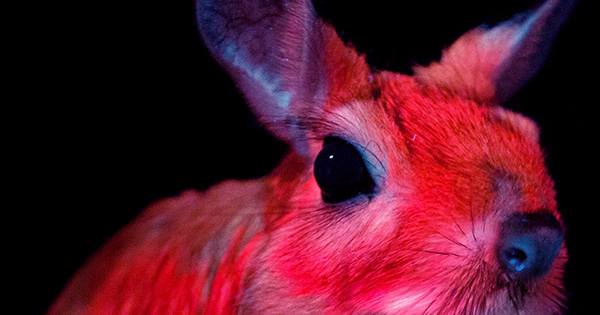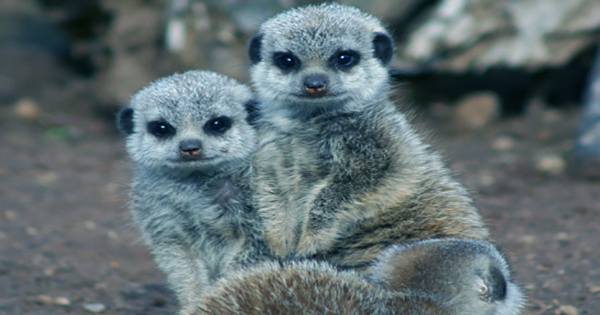The growing globe among dark biofluorescent mammals has found a new member the springhare, a large and unusual rat that dies at night in various parts of Africa. As published in the journal Scientific Reports this week, scientists have shown how springhare“sparkle with biofluorescent” when hit by ultraviolet light. This ability is due to their fur, which can absorb ultraviolet light and reproduce it as a visible color that is rich in pink, red and orange.
Bright fur was seen in live specimens of two separate species: the South African springhare (Pedetes capensis); and in the East African Springhare (P. surdaster) which inhabits parts of Kenya and Tanzania. Both species are small kangaroo-like animals that usually live a nocturnal life. Despite their names, they not closely related to rabbits, but more closely to rats, mice, and other rats on the branches of family trees.

The authors of the study believe that this is the first recorded case of biological flow of placement mammals in any old world. From the New World flying squirrel to monotony, many other mammals have recently seen glowing under ultraviolet light. As if the platypus could not get to a stranger, a study published last year found that this egg-laying mammal has biofluorescent fur, which appears green under UV. This feature has also been documented in flying squirrels (hot pink), bilberry ears (blue), commas (green), some Australian bats, domes (blue) and the only marsupial in America, the opossums(hot pink).
Although the spring phenomenon was unexpected, “our observations also prove that organic proliferation can be more widely distributed in mammals than previously thought,” the authors concluded. This feature is surprisingly common in mammals as it proves to have some evolutionary advantage, although scientists quite stumped about what it could be. Some researchers have suggested that it may help some solitary creatures recognize each other during the mating season, while others speculate that it could used by absorbing wavelengths to avoid detection of UV-sighted predators that would otherwise be reflected brightly.
Unlike other glowing mammals, the biological expansion seen in springhare is surprisingly patchy, as if they were engaged in a colorful fight towards a lunatic. Researchers suspect that this patchiness may indicate that springhares enriched with biofluorescence as a means of camouflage from predators. “We speculate that if their predators are UV-sensitive – the unique pattern we observed could act as a kind of camouflage from predators,” Eric R. Olson, an associate professor at Northland College of Natural Sciences, told IFLScience in an email.
“However, there is a possibility that this feature does not yet have any environmental significance,” Olson added. “This can be accurately estimated and will be difficult to confirm until behavioral research and studies that assess the spectral sensitivity of spring and their predators.” Alternatively, the study also cautiously noted that biofluorescence might relate to certain diseases. For example, biofluorescence has observed in the development of porphyrias in squirrels, canfield rats, and humans.
“We were able to determine that porphyrins were at least partially responsible for the organic expansion in the spring,” Olson explained.” Either way, you are in the throes of spring. Right, who is next?














